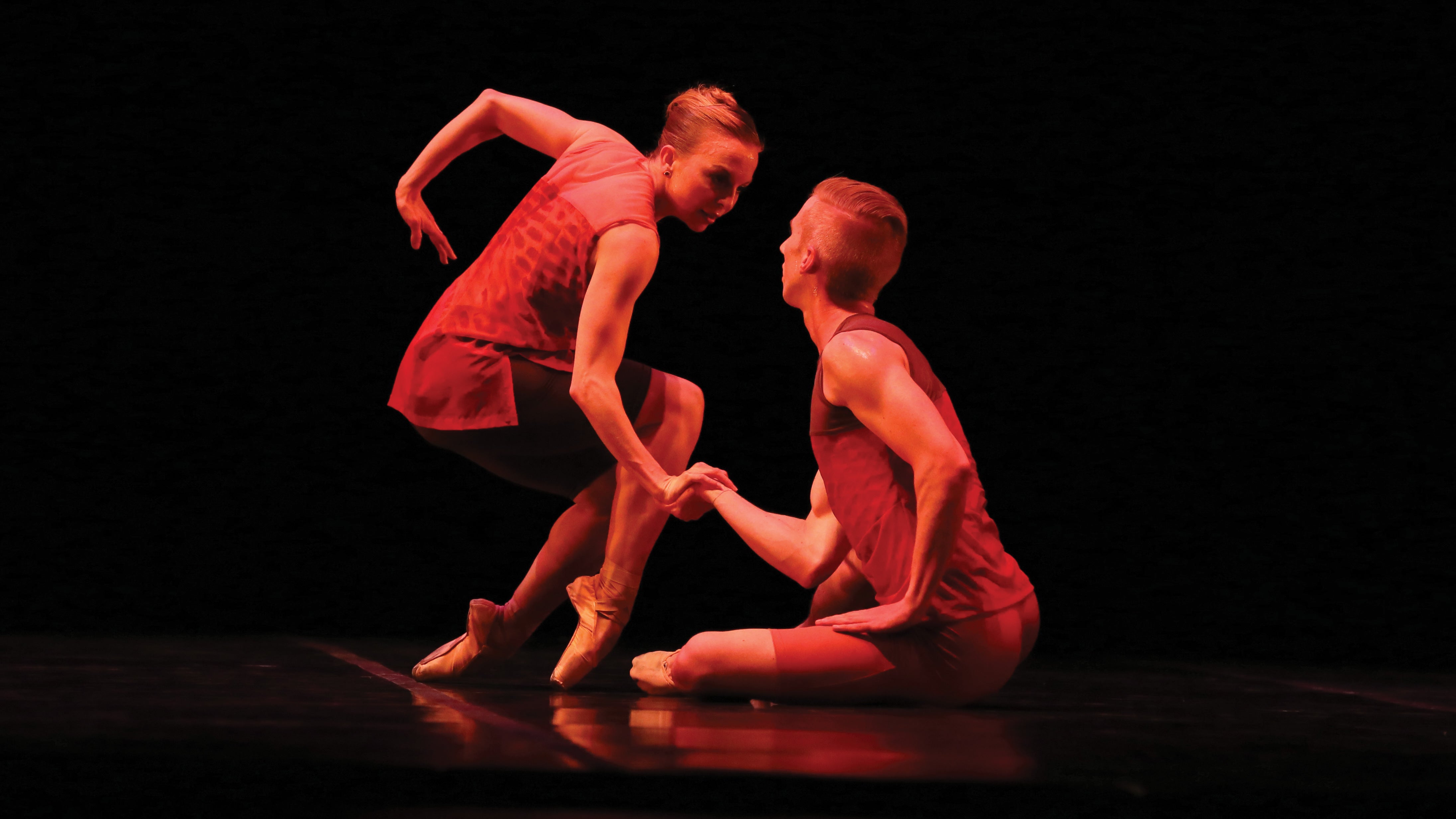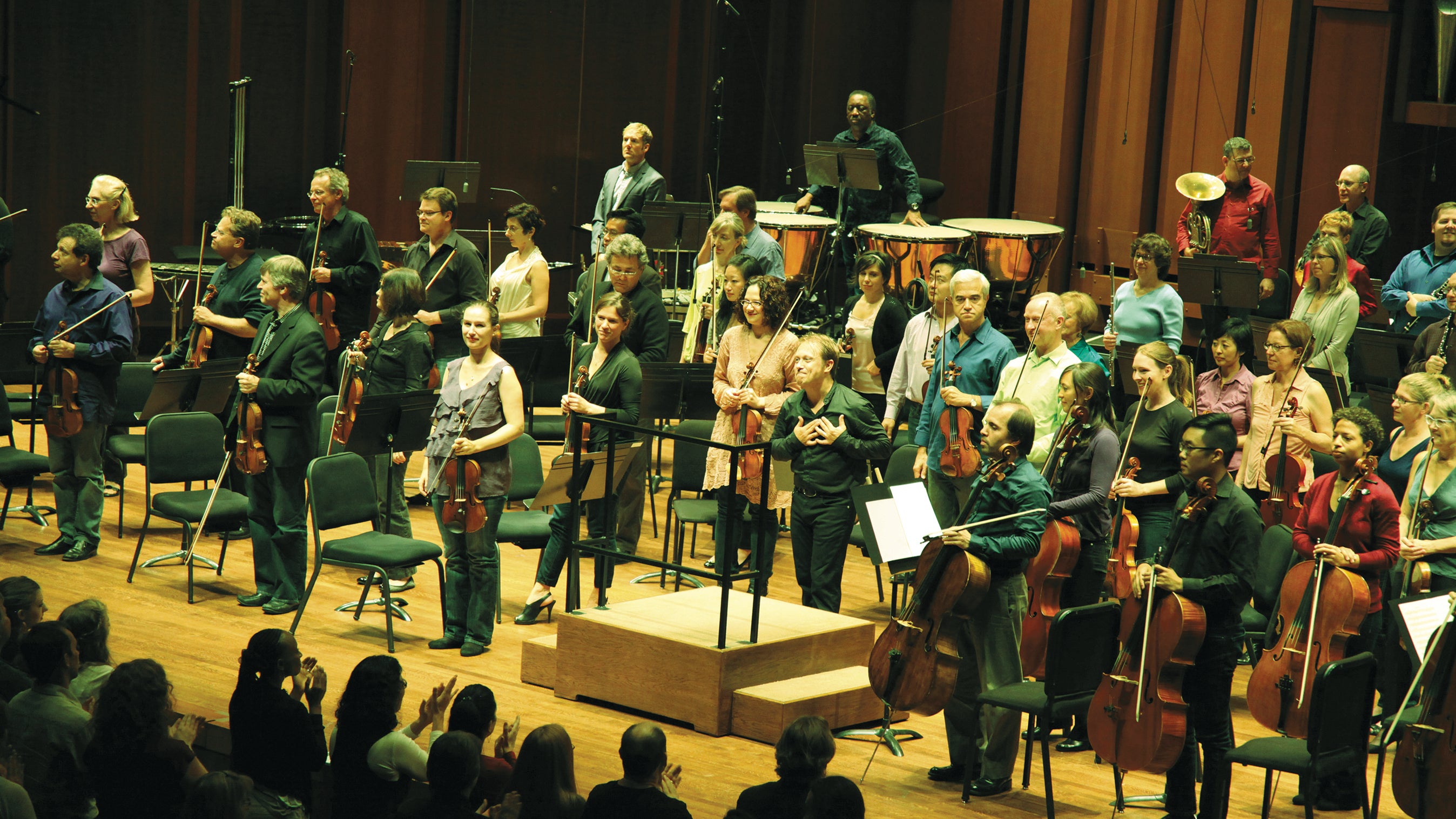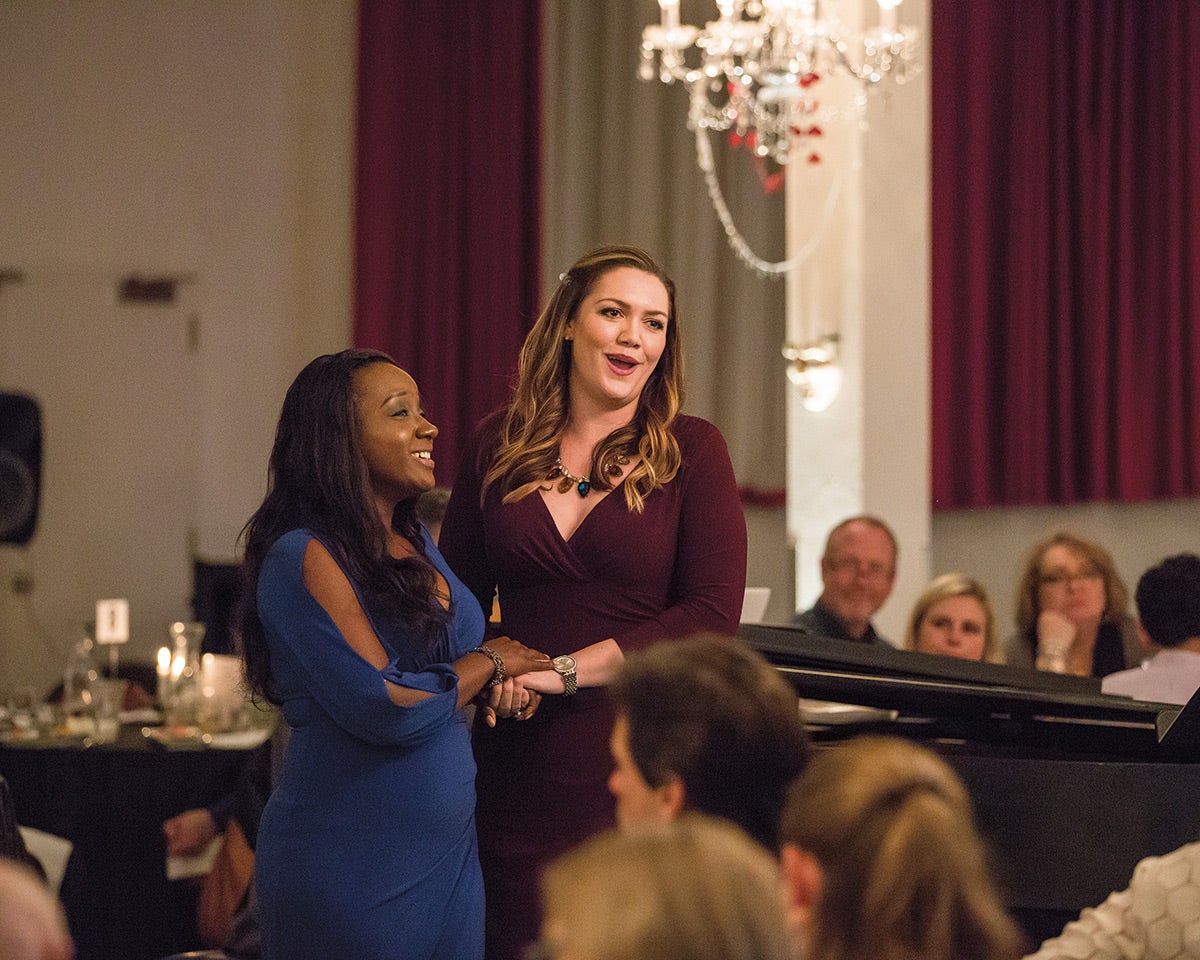The Opera Theatre of Saint Louis set out to approach an underlying problem: newer audiences are not spending enough on tickets to replace the losses of those departing. Based on its market research, analysis and testing new programs, the company is now making greater strides in identifying more precisely the challenges facing the company and more successfully reaching out to potential new opera lovers.
As bass-baritone Robert Mellon took the floor of a banquet hall in a historically black area of St. Louis, the crowd was expectant. The primarily African-American group had come out on a Sunday afternoon in March for an Opera Tasting hosted by the Opera Theatre of Saint Louis (OTSL), and Mellon was the emcee. Most of the 150 attendees had never been to the Opera Theatre, but they were curious enough to buy a ticket for $25. For the next 90 minutes, they were served 11 samples of food and drink as they listened to Mellon and three other performers sing 11 operatic excerpts that spanned the period from Mozart’s 18th-century Don Giovanni to Huang Ruo and David Henry Hwang’s 21st-century An American Soldier. It was Mellon’s job to introduce the songs and the singers with the zeal of an evangelist.
A lot was riding on it.
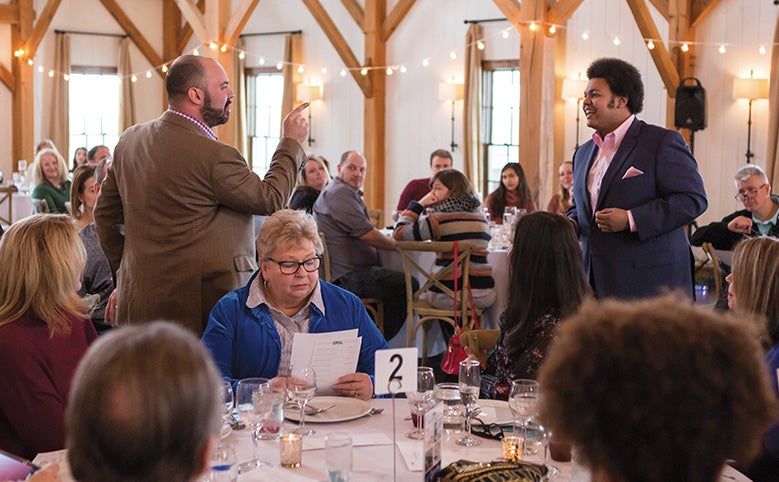
That same night, Mellon would do the whole show again in a hip, artsy neighborhood, just as he would on the following two evenings and just as he’d done six times in the preceding days in a variety of places selected by OTSL—a historic district and a working-class neighborhood in St. Louis as well as in suburbs and college towns farther away. Each venue featured restaurants whose cuisines included Mexican, Chinese, farm-to-table and international. “The hope,” Mellon said, “is that these events bring in tons of new patrons and keep opera living for many, many years to come.”
OTSL is known for its short annual festival season in late May and June, and for its commitment to commissioning new operas and developing emerging talent. It also has a tradition of performances in English and preperformance lawn picnics. Like most U.S. opera companies, OSTL has in the past decade begun to see its core audience aging and dwindling, its earned income dropping and its expenses rising. Audience building therefore soared to the top of its strategic priorities and, before long, OTSL decided to focus those efforts, targeting the next generation of customers—Gen X-ers and millennials—as well as people of any age in the region’s racially and ethnically diverse population. Success, if achieved, would help fulfill OTSL’s mission statement, which reads, in part, “To connect diverse audiences from across the region and around the world through the power and beauty of live opera.”
Success would be critical from an artistic viewpoint as well. “We are bringing really top-level artists to St. Louis, and it’s important for us to be able to have the theater sufficiently full to engage them,” said Paul Kilmer, director of artistic administration. “It’s somewhat disheartening to go into the theater and see massive blank spaces in the sides.”
Acting on instinct informed by limited research, OTSL started new programs. It established a Young Friends program for people under 45, offering them a preperformance buffet and open bar on the lawn along with an opera at a discount of $49 per ticket. It created an advisory Engagement and Inclusion Task Force that also provided connections to potential new audiences. When it commissioned operas, it looked for composers and librettists who could tell stories with socially relevant themes. It offered artists’ residencies that enabled the presentation of programs outside its annual five-week season. And in 2015, it launched Opera Tastings.
To an extent, these initiatives seemed to work. Many newcomers bought tickets to OTSL’s regular performances. OTSL’s premiere in 2013 of an opera about prizefighter Emile Griffith, Champion, which it co-commissioned, drew more-than-usual numbers of African Americans to all-but-sold-out performances. In 2014, a production of The Magic Flute that was designed and directed by fashion designer Isaac Mizrahi brought in “new-to-file” Gen X-ers who had been wooed at a preseason event with him.
But the newcomers were not numerous enough to offset the departures.
OTSL realized that it had what staffers termed “a leaky-bucket problem”—that is, a slow net loss in total number of attendees. “The younger generations have been increasing in number very steadily,” said Timothy O’Leary, who was OTSL’s general director until July 2018. “The only problem is the older generations of audience are gradually leaving at a slightly faster rate than the younger people are coming in. This is the leaky bucket—you want to be pouring new audiences into the bucket at a faster rate than audiences leave.”
At least, that’s what OTSL thought—until it was able to do more market research, including focus groups, surveys and data analysis, largely with funds from The Wallace Foundation. OTSL indeed did have a leaky-bucket problem, but it was actually a bit more complex than originally understood. It required some rethinking of audience-building initiatives.
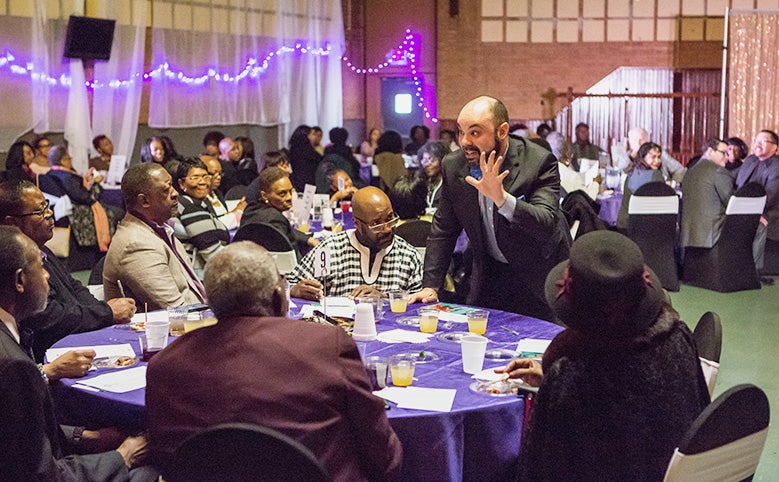
Early Days
Initially, the Opera Theatre of Saint Louis had no firm grip on what barriers might be in the way of attracting new audiences. Drawing on input from its task force and Young Friends committee, some staff members thought OTSL’s location in Webster Grove, a wealthy white suburb, might be an issue and proposed simulcasts in a more welcoming area as a remedy. Others simply saw opera as unfamiliar to potential newcomers—caricatured as an expensive, elitist, stuffy event for men in tuxedos and women in pearls and not much fun. Some thought the long length of many operas, along with a perceived need to learn about an opera before attending a performance, were detriments in today’s fast-paced society.
Information gleaned from focus groups in 2015 indicated that the Webster Grove locale was not a key reason obstructing attendance. OTSL also noted that simulcasts had not produced new audience members at other organizations and dropped that idea. Instead, OTSL decided to site Opera Tastings around the region as its primary means of engagement.
Still, research did show that many people were put off by “perceptual barriers” pertaining to opera in general: They did not know what to expect at a performance. Yet when focus group participants learned about OTSL’s garden setting, picnicking opportunities and performances in English, many were open to giving an OTSL performance a chance. There was a gap between what they thought OTSL had to offer and what it actually did offer—impressions that OTSL would have to counter.
“I had this preconceived notion of opera that it was something that I couldn’t afford or that it wasn’t necessarily something that I’d be interested in,” said Kaitlin Page, who belongs to the targeted millennial generation (generally defined as those born between 1981 and 1997). After attending Opera Tastings, she has now not only changed her mind but also recently joined the Young Friends steering committee.
Krishna Patel, a millennial who attended an Opera Tasting in 2017 and two festival performances in 2018, said he, too, was surprised by OTSL—specifically, that the performances were in English. “I thought I had to dust off my Italian from college, but it turns out that I can just show up,” he said. “And I don’t actually have to do any research beforehand or pull out a translation book or really anything.”
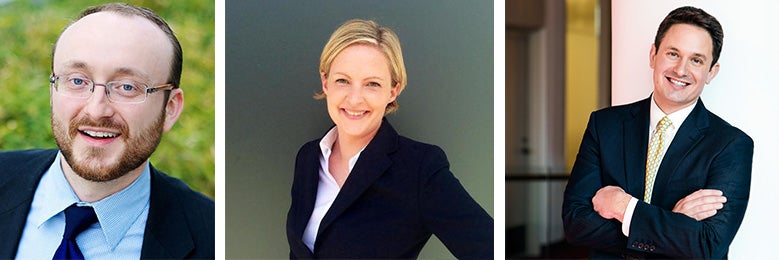
Insights from Market Research
The market research that began in 2015—focus groups, a qualitative study of prospective audience members, and analyses of demographic data collected at Opera Tastings and in ticket sales—provided many insights.
The largest lesson concerned the leaky bucket. OTSL knew it was attracting many newcomers, but that did not necessarily fix the leaky bucket.
Analysis showed that while the company’s core audience bought several tickets each year, even tending to schedule their May and June around opera season, newcomers behaved differently. They generally bought tickets to one performance per season rather than coming back several times. Newcomers also purchased less expensive tickets and were not likely to return to OTSL in consecutive years. The conclusion was clear, says Joe Gfaller, the company’s director of marketing and public relations: “We need to bring in multiple new households to replace any one existing household that we might lose due to age, health, relocation or other reason.”
This conclusion wasn’t readily apparent from raw numbers. Gross ticket sales had not dropped precipitously and had even grown in some years. “We were losing [the higher-spending] audience at a faster rate than we anticipated,” said Caron House, assistant director of development. “A smaller group of people are buying more tickets. So we were seeing great ticket numbers, but we didn’t realize that that’s because a smaller group is actually purchasing more and higher-priced tickets. That’s not sustainable.”
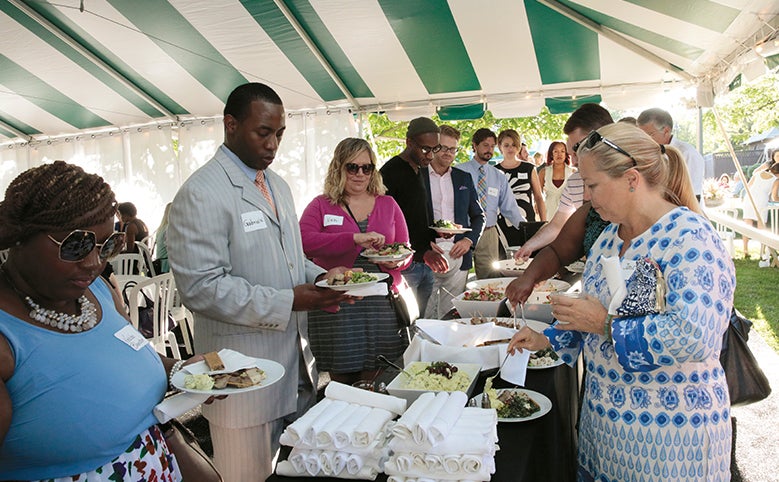
OTSL found the research to be instructive on several other issues, too.
- It reinforced the company’s theory that its festival-season format and relaxed atmosphere could help overcome perceptions among some that opera is elitist or too formal to enjoy. “The more they found out about our style of producing opera and the whole social experience that surrounds the performances, the more audiences were interested in coming,” said O’Leary.
- It showed that many young people of all races—not simply people of color—wanted to see a diverse cast on stage. An opera with all-white performers buttressed their perception that opera is a stodgy art form. “Increased diversity on the stage was a mission-driven initiative,” said House. “But that ramped up a lot once we learned through the Wallace-funded programming that audiences were interested in diversity on the stage.”
- It revealed that the fear of being over- or under-dressed was a big concern and deterred some people from buying a ticket.
- It showed that Opera Tastings do cultivate some new audiences. Over the length of the program, more than three-quarters of the Tastings attendees were new-to-file. Between 2015 and 2018, an average of 42 percent of those who attended a Tasting event bought tickets to mainstage productions. But these numbers also mean that a majority of Tastings attendees—nearly 60 percent—have not yet purchased festival tickets. Whether they will in the future or were not won over remains to be seen.
- It discovered that a large number of audience members under 45 are not attracted by the Young Friends buffet dinner or the opportunity to make social connections. “We were surprised [that] we had people who were just operaphiles, very young operaphiles,” said House. In fact, only 20 percent of attendees who age-qualify actually go to Young Friends events. Another possible explanation: Young Friends are assigned seats only a day before the performance, and some attendees may care more about choosing their own seats than about getting a discount.
- Some socially relevant themes do succeed in attracting racially diverse audiences. For example, 40 percent of single-ticket buyers for Champion were new to OTSL, and a sizeable number of households that bought tickets for it were nonwhite.
- However, research also determined that in 2016, 2017 and 2018, warhorse operas were more popular with younger audiences than contemporary, socially relevant works. “One of the most surprising things was we thought that new work was the most appealing thing to younger audiences and more diverse audiences,” said Nicole Freber, director of development. “And we’re seeing some of that, but we’re also seeing the very traditional rep is appealing to those groups as well. I’m not sure that we really have focused on that prior to the research.”
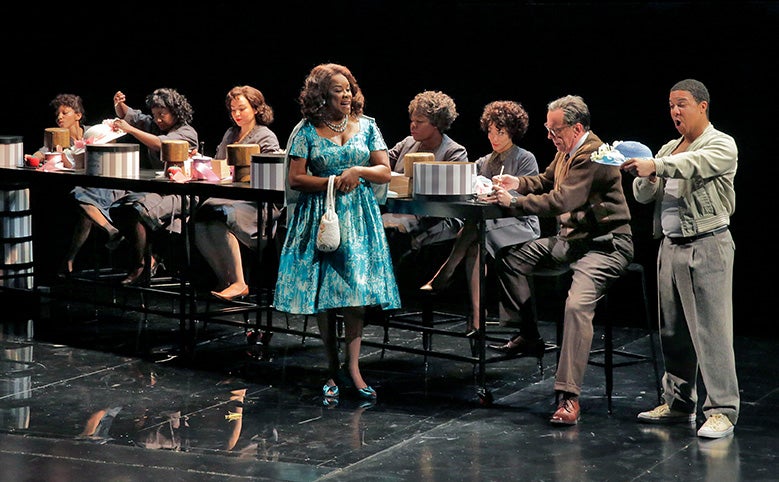
New Initiatives and Course Corrections
Clearly, OTSL had work to do, starting with the preconceptions of opera and misperceptions—or no perceptions—about OTSL itself. In August 2016, OTSL launched a brand-awareness campaign. For Gen X and millennial audiences, the campaign was mostly digital—a video placed on social media portraying a group of friends attending the opera and online banner ads directing people to a catchy, informative microsite. To reach racially diverse audiences, OTSL commissioned billboards depicting a group of African American, racially mixed and white friends at the opera and placed them in neighborhoods populated by all three groups. The message, also intended to appeal to young audiences, conveyed OTSL’s social aspects.
The branding campaign ran until June 2017. It was expensive and had no noticeable effect on ticket-sale growth, so OTSL ended it with little ado. “This work has helped ground everyone in a much more meaningful dialogue around data and proving your hypothesis,” said Gfaller. “It’s now much easier to cut otherwise popular ideas from our budget.”
The company fared better with its efforts to assuage dress-code fears. In 2017, OTSL hired a photographer to capture pictures of audience members dressed in varying levels of casualness and formality. It shared these “Pop Up Paparazzi” photos on Facebook, where it has reached more than 26,000 people to date, more than double OTSL’s Facebook followers. This effort, which is also posted on Instagram, is ongoing.
OTSL is still focused on the need to cultivate new-to-file attendees, but now it’s just as intently addressing the need to convert them into regular ticket buyers. Over the last few years, an average of 20 percent of OTSL’s first-time operagoers have bought tickets the next year, which Gfaller believes exceeds the record of most other opera companies. Anecdotal evidence suggests he is correct. But that’s still not enough, based on what they are losing each time a loyal subscriber leaves.
The main audience-building strategy is twofold. For young and diverse audiences, it continues to rest on Opera Tastings for newcomers. For those under 45, it is counting on Young Friends, both to attract them and to instill loyalty that will encourage them to return.
Opera Tastings, says Joshua Blue, who performed at them in 2017 and 2018, “is the best way to introduce people to opera. It’s a low-pressure, low-stakes environment.” To demonstrate that the singers reflect the desired audiences, OTSL has mandated that two of the four performers in Opera Tasting must be singers of color. Blue, a fast-rising 24-year-old tenor, noted that he keeps his hair in an Afro because “you don’t see it often” among opera singers and he wants to send a message to other African Americans that opera is for them.
OTSL has been conscious that young operagoers in particular want to see singers of color appear regularly on the main stage as well and keeps that in mind when casting. It also acknowledges that it failed in 2017 when its production of Madame Butterfly included no Asian performers in singing roles, dampening enthusiasm for the production among Asian Americans.
Over the past four years, OTSL has expanded Opera Tastings. From three events the first year, it grew to six and then to 11 this year. They have taken place as far away as Columbia, Mo., home to the University of Missouri (125 miles away), and Fayette, Mo., home to many young professionals (150 miles). Though the numbers are small, some new households are buying tickets from those distant areas; the peak to date from far away was 40 in 2017.
And there have been experiments with timing. Initially, Opera Tastings took place in late March or early April. In 2017, they were split between January and late April, and this year they were scheduled only in March—all in a 12-day period. While exhausting to staff, that saves on costs—the four singers need to travel to St. Louis just once, for example—which is a critical issue. Partly because of the schedule change, OTSL was able to shave the cost of each Opera Tasting from about $7,700 in 2017 to about $7,100 in 2018. Box-office sales for festival tickets don’t seem to be affected by the scheduling, Koverman said.
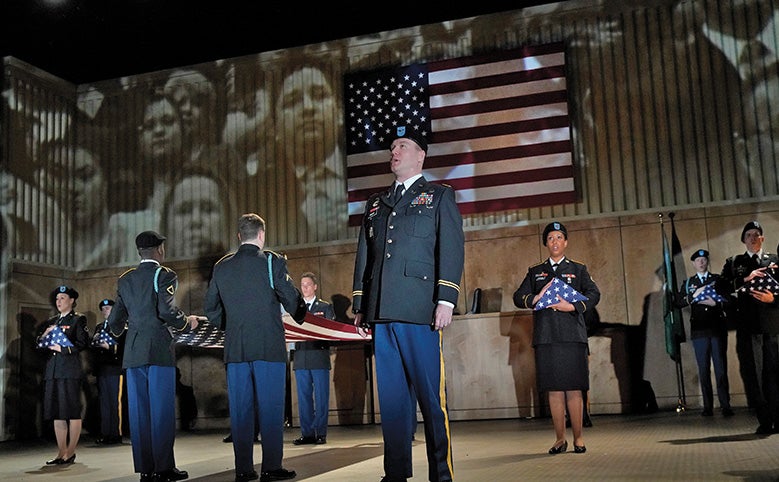
To entice those who qualify to join Young Friends—which House said is OTSL’s best means of converting this group into subscribers—OTSL informs all attendees about the program and sends follow-up e-mails to those under 45. Additionally, OTSL mines its database to identify all patrons under 45, who are sent information about Young Friends via e-mail and direct mail. In the coming year, OTSL plans to promote the program in Facebook advertising to a targeted list of young patrons. One effort to appeal to young people drawn to the opera for intellectual reasons—a Friday-night after-performance party during which audience members were able to chat with singers—will be dropped next year because it failed to attract more attendees.
Despite their irregular track record with new audiences, contemporary and socially relevant works will continue to find a home at OTSL. The 2018 production An American Soldier, which told the story of a Chinese American soldier driven to suicide by racist harassment from fellow soldiers, missed its sales goal, despite national critical acclaim. It was OTSL’s weakest draw in 2018 and did not come close to the tickets sales for Champion, for example.
Yet these works do have a constituency. As newcomer Patel, who attended a performance of An American Soldier in June, said, “I was actually surprised that opera’s still being made; I thought this would be something from like a classical piece of work. Today I realized actually no, this is something new. In fact, this is something exploring American identity.” He added: “I was shocked that that can even be explored through the medium of opera. So I’m really excited to see a piece that addresses something like contemporary issues in the medium of opera.”
And it’s the right thing to do for the operatic form. “We have to be responding also to the artistic vision of our artistic leadership, like our brilliant artistic director, Jim Robinson,” said Andrew Jorgensen, who became OTSL’s general manager in July.
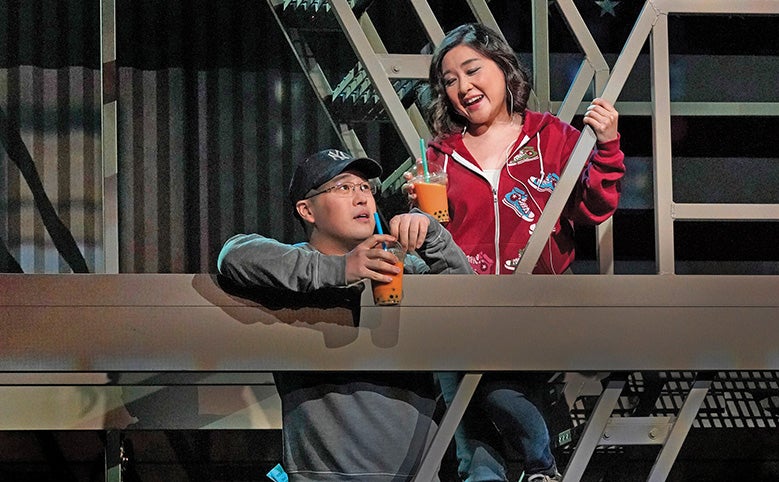
The Challenges Ahead
Audience-building initiatives have costs—sometimes substantial ones, especially considering that all opera is already subsidized by donors. Can these costs be weathered? Will new-to-file households eventually return more often? Or can OTSL adjust to this new consumer behavior in other ways?
“What we’re testing now is whether this Opera Tastings model is sustainable,” said O’Leary. “It’s an expensive way to acquire new audiences.” In an encouraging sign, however, there’s some evidence that audience members who come through Opera Tastings to the festival are buying more expensive tickets in a shorter period of time than other new attendees; furthermore, they seem to become donors at a faster rate than expected, according to House.
The development department is also working on the cost issue. “My colleagues and I have been focused on getting prospective donors to Opera Tastings to see that program in action,” Freber said. Because of those efforts, Ted Wight, a St. Louis realtor, provided $2,500 grants to help support Opera Tastings in both 2017 and 2018, and AT&T executive and OTSL board member Allison Roberts underwrote an event for $2,500 in 2018.
As planning for next year continues, OTSL is also looking to economize by doing fewer Opera Tastings. One such event is already on the books—with a sponsor. Ces & Judy’s Catering has committed to underwriting the food and beverage costs, valued at about $7,500, at one event in a 300-seat venue.
OSTL is also discussing events similar to Opera Tastings at venues that will pay OTSL to come to them—specifically, country clubs, in 2019. Gfaller said that two clubs have approached OTSL and that discussions are underway with both.
Such events would help subsidize the public Opera Tastings and may well add some new audience members in the target audiences. “For these programs to be sustainable, we need to think more broadly about what it means to bring new audiences into the fold and not have too narrow a mindset about what the desired perfect new audience member might be,” said Gfaller. “We recognize that you could be a baby boomer and have as little background with opera as a millennial. And if that’s the case, Opera Tastings is a perfect experience for you, too.”
After all, each and every ticket buyer does help to plug the leaky bucket.
This article and video are part of a series describing the early work of some of the 25 performing arts organizations participating in The Wallace Foundation’s $64 million Building Audiences for Sustainability initiative. Launched in 2015 in response to concerns about a declining audience base for a number of major art forms, the endeavor seeks to help the organizations strengthen their audience-building efforts, see if this contributes to their financial sustainability, and develop insights from the work for the wider arts field.
Start a Discussion
The purpose of this Discussion Guide is to help arts administrators, board members, and arts practitioners working within varying disciplines and with a range of budget sizes to better understand and apply lessons from another institution’s experience to their own. The guide can serve as a teaching aid for small-group discussions, as well as individual study. It is designed to be used in conjunction with the written and/or video versions of the story.
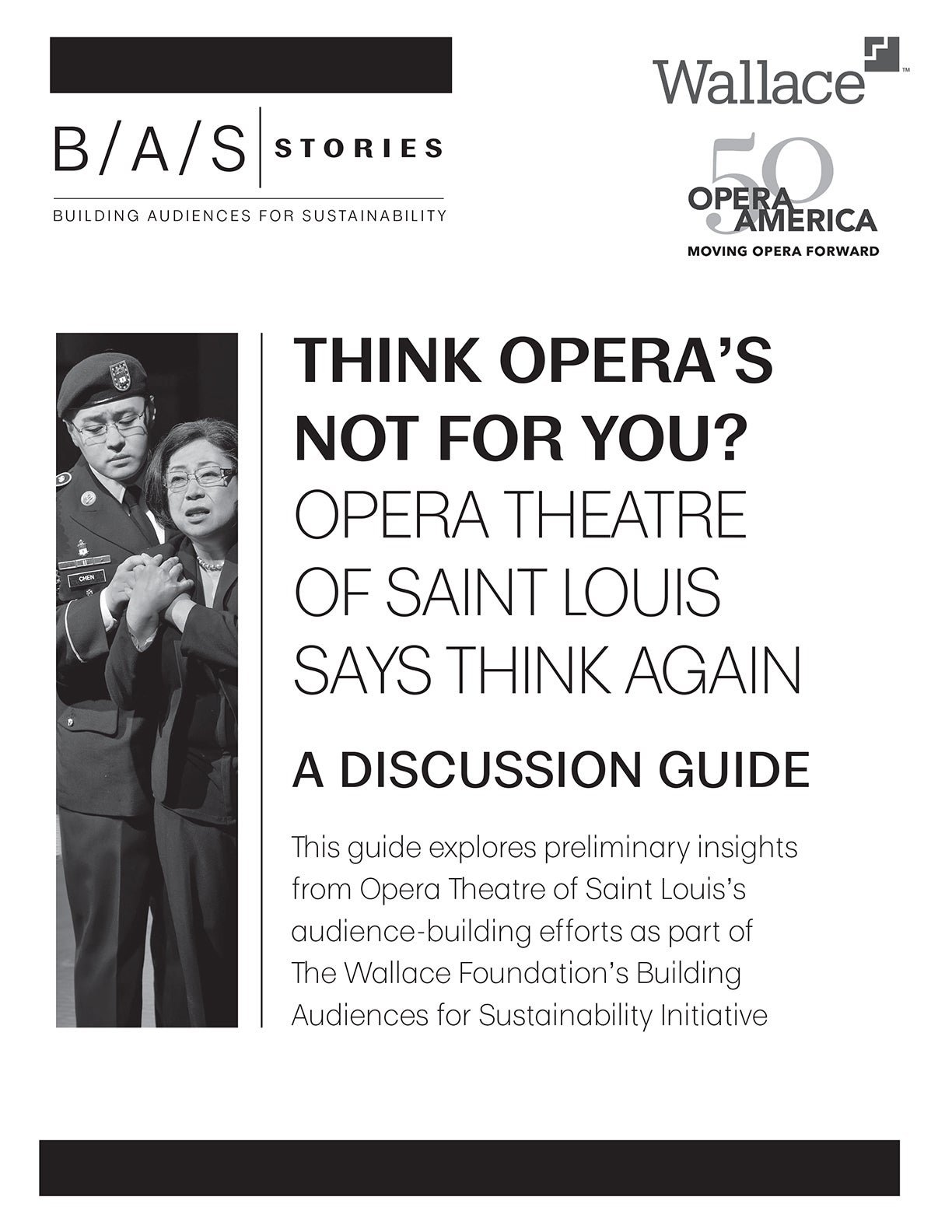
Stories in Building Arts Audiences
